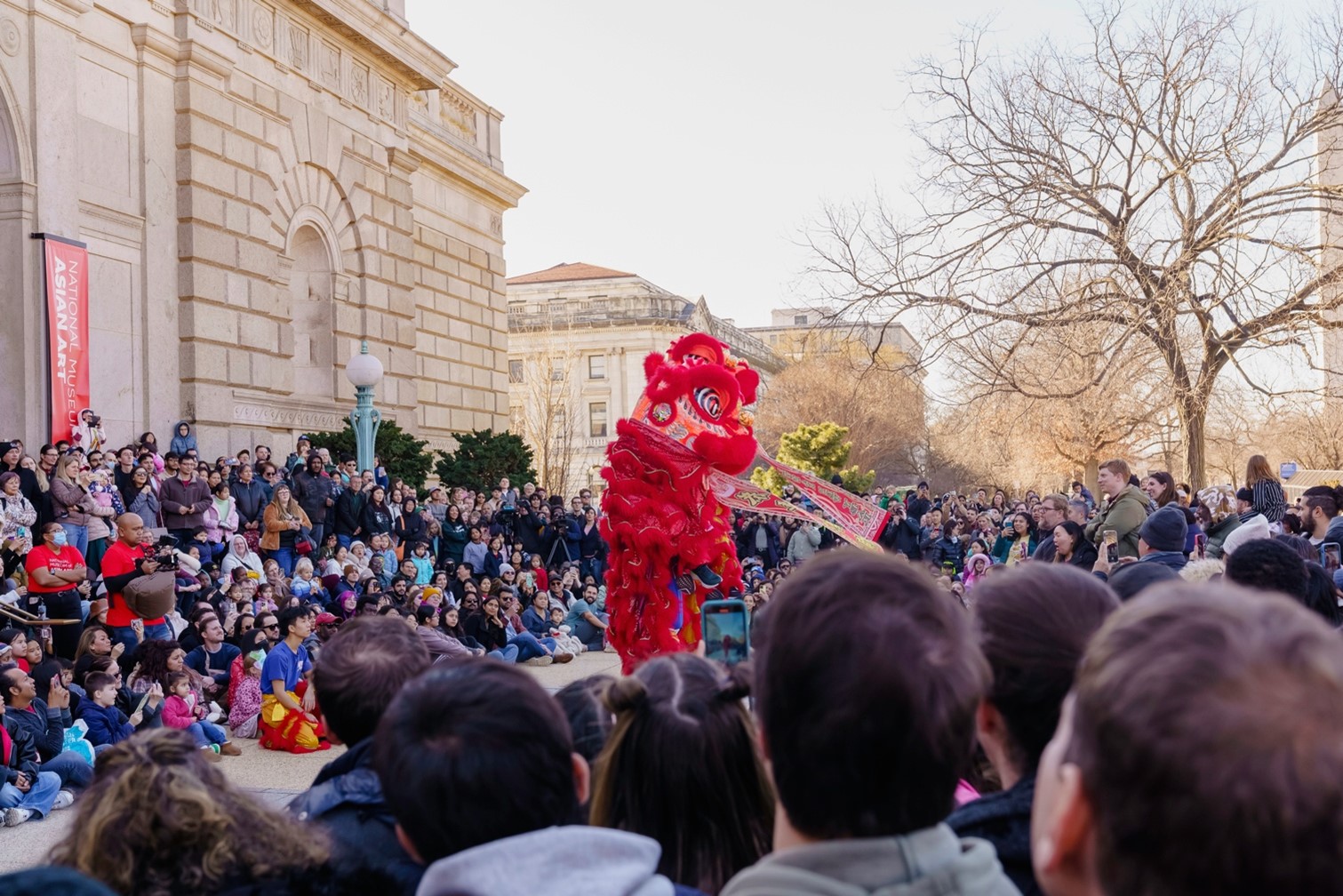National Museum of Asian Art Announces Its 2025 Lunar New Year Market

A large crowd watching a lion dancer perform in front of the museum during the 2024 Lunar New Year Festival. Credit: National Museum of Asian Art, Smithsonian Institution.
The Smithsonian’s National Museum of Asian Art has announced its 2025 festival commemorating Lunar New Year, a celebration of the arrival of spring and the beginning of a new year on the lunisolar calendar. The event will take place Saturday, Feb. 1, 3–7 p.m, with festivities in both the museum and the Smithsonian Arts and Industries Building nearby. The festival is free and open to the public.
This year’s Lunar New Year festival will celebrate the year of the snake. In the Arts and Industries Building, the festivities will include lion dances, hands-on activities and an evening market with food vendors, artisans and craftmakers. Special art tours and family activities will take place at the museum. The full schedule is available online. The museum also offers many digital resources on Lunar New Year, such as virtual tours of related collections, lesson plans and webinars.
The 2024 Lunar New Year festival brought nearly 15,000 people to the National Museum of Asian Art.
About Lunar New Year
Commonly known as the Spring Festival in China, Lunar New Year is a 15-day celebration marked by many traditions. The Lunar New Year’s Eve reunion dinner is the highlight that kicks off the holiday, a feast with a spread of symbolic dishes, such as a whole fish representing abundance, that bring good luck and fortune. The 15th and final day of the holiday is the Lantern Festival, during which people have tangyuan, or sweet glutinous rice balls, and children carry lanterns around the neighborhood at night to mark the end of the celebration.
In the Chinese zodiac, 2025 is the year of the snake. Different regions across Asia celebrate Lunar New Year in many ways and may follow a different zodiac. Many Asian Americans and Pacific Islanders do not observe the Chinese/lunar zodiac.
About the Smithsonian’s National Museum of Asian Art
The Smithsonian’s National Museum of Asian Art is committed to preserving, exhibiting, researching and interpreting art in ways that deepen our collective understanding of Asia, the United States and the world. Home to more than 46,000 objects, the museum stewards one of North America’s largest and most comprehensive collections of Asian art, with works dating from antiquity to the present from China, Japan, Korea, South Asia, Southeast Asia and the Islamic world. Its rich holdings bring the arts of Asia into direct dialogue with an important collection of 19th- and early 20th-century art from the United States, providing an essential platform for creative collaboration and cultural exchange between the U.S., Asia and the Middle East.
A 1906 gift from Charles Lang Freer paved the way for the museum’s opening in 1923, and today the National Museum of Asian Art is a leading resource for visitors, students and scholars in the United States and internationally. Its galleries, laboratories, archives and library are located on the National Mall in Washington, D.C. The museum is free and open to the public 364 days a year (closed Dec. 25), making its exhibitions, programs, learning opportunities and digital initiatives accessible to global audiences.
# # #
SI-382-2024
